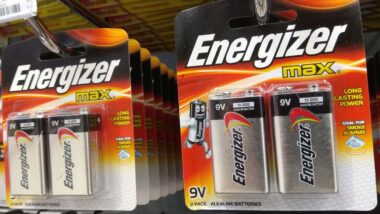Top Class Actions’s website and social media posts use affiliate links. If you make a purchase using such links, we may receive a commission, but it will not result in any additional charges to you. Please review our Affiliate Link Disclosure for more information.

A number of plaintiffs petitioned the JPML last month to create a Lumber Liquidators laminate flooring MDL for all the Lumber Liquidators lawsuits alleging toxic flooring problems associated with the laminate flooring products made by the Lumber Liquidators company.
A Lumber Liquidators MDL would centralize all Lumber Liquidators toxic flooring lawsuits pending in court before one federal judge in order to reduce duplicative discovery of common issues among the cases, avoid conflicting pretrial rulings, and to serve the convenience of all individuals and entities involved in this litigation.
Over the past few weeks, the number of complaints filed against Lumber Liquidators has grown, with over a dozen toxic flooring class action lawsuits filed against the company in at least seven different federal districts.
The increase in consumers filing this Lumber Liquidators lawsuits is likely attributable to a recent 60 Minutes segment that said some Lumber Liquidator flooring manufactured in China and later sold in California did not meet formaldehyde emissions standards established by that state’s consumer laws.
Based on that report and other recent news reports of Lumber Liquidators laminate flooring side effects and complications, the number of toxic flooring lawsuits is expected to grow.
All plaintiffs of the recently filed Lumber Liquidators lawsuits similarly claim that the Chinese-made laminate flooring sold in the U.S. by Lumber Liquidators contains unsafe levels of formaldehyde. It is a chemical regularly used in the manufacturing of resins, building materials, and is also generally used as an embalming agent.
The Environmental Protection Agency classifies formaldehyde as a possible carcinogen. But the EPA hasn’t instituted regulations regarding acceptable formaldehyde gas levels for laminate home flooring.
Most home owners are likely not aware of the possible dangers that laminate flooring could pose.
Common formaldehyde exposure symptoms that many Lumber Liquidators consumers claim they experience after installing the laminate flooring products include:
- Respiratory symptoms
- Eye, nose, and/or throat irritation
- Headaches
- Nausea
- Chest pain
- Rashes
- Vomiting
Some other laminate flooring side effects linked to formaldehyde exposure include the development of certain forms of cancer and leukemia.
According to researchers associated with the non-profit group Global Community Monitor, Lumber Liquidators laminate flooring, on average, contains six to seven times the California state standard for the use of formaldehyde. Some of the samples contained even more, reportedly 20 times the amount of formaldehyde allowed by the state.
Consumers who claim they and their family members were exposed to dangerous levels of formaldehyde after installing Lumber Liquidators laminate flooring should consider filing toxic flooring lawsuits or join toxic flooring class action lawsuits.
UPDATE: Several Lumber Liquidators class action lawsuits were consolidated into a multidistrict litigation (MDL), or mass tort, and transferred to a Virginia federal court by the U.S. Judicial Panel on Multidistrict Litigation (JPML), alleging that the flooring company sold wood floors containing toxic levels of formaldehyde.
UPDATE 2: On Oct. 24, 2017, Lumber Liquidators agreed to a $36 million settlement resolving claims over both the safety and quality of its Chinese-made laminate wood flooring.
Join a Free Class Action Lawsuit Investigation
If you purchased laminate flooring from Lumber Liquidators, you may have a legal claim. Join a free class action lawsuit investigation to see if you qualify.
ATTORNEY ADVERTISING
Top Class Actions is a Proud Member of the American Bar Association
LEGAL INFORMATION IS NOT LEGAL ADVICE
Top Class Actions Legal Statement
©2008 – 2024 Top Class Actions® LLC
Various Trademarks held by their respective owners
This website is not intended for viewing or usage by European Union citizens.















3 thoughts onJPML To Hear Lumber Liquidators MDL Arguments
UPDATE: Several Lumber Liquidators class action lawsuits were consolidated into a multidistrict litigation (MDL), or mass tort, and transferred to a Virginia federal court by the U.S. Judicial Panel on Multidistrict Litigation (JPML), alleging that the flooring company sold wood floors containing toxic levels of formaldehyde.
Never received compensation for 12mm brazilian koa dream home st james laminate.. filed a claim also, I have info regarding purchase. 4/2010.
Someone from an Attys office called a while back regarding my toxic flooring. They were emailing me paperwork to have signed and fax back to them but I was ill and never followed thru. Need to get back and finish the investigation of my flooring I purchased. My cell is 8103571925 thank you!